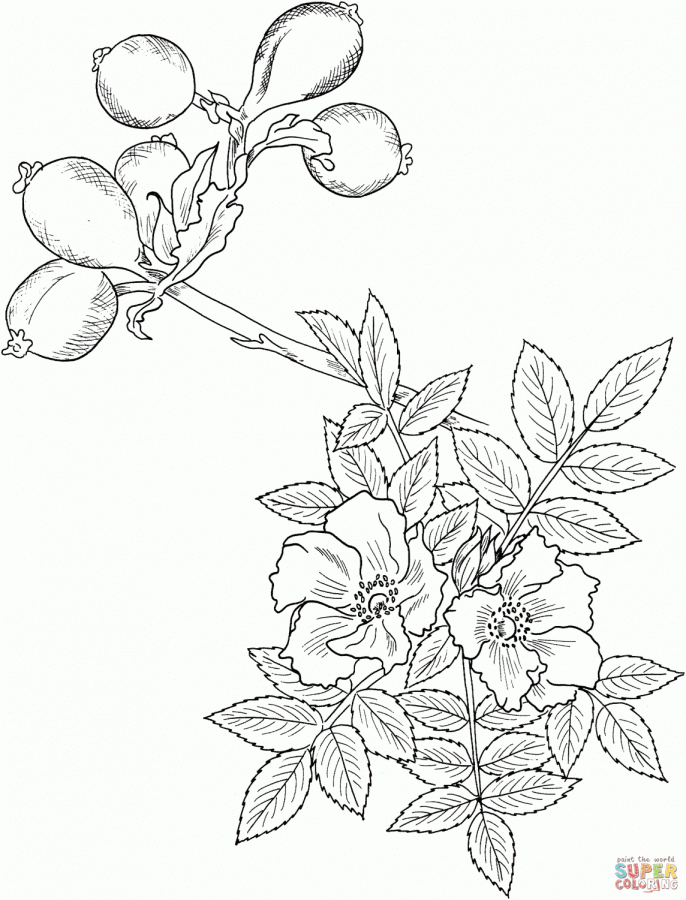Bittle’s Bits of Nature and Science
Edible Wild Plants in Nebraska!
October 26, 2020
Right now is the time of year to begin looking for salsify, wild rose hips, wild plums and even the American hazelnut. All of these plants can be found here in Nebraska while salsify, the wild rose and the wild plum is found right here at LSW. Hazelnuts will be located here too but not until next spring since our planting during the 2020 spring time was side-lined due to the Covid shutdown.
The Wild Prairie Rose can be found throughout the outdoor areas but are relatively small and difficult to find unless specifically looking for them. Wild plums are numerous and typically located at the transition areas between prairie and water sources, woodlands or active/old erosion areas. On campus the plums are located along the northernmost border of the property along the area adjacent to a row of homes. The last plant sampled is called the Salsify and is best harvested during summer into late fall when the tops are still green. Salsify grows all over the prairie areas of LSW. Their flowers and seeds resemble a large dandelion flower and seed head.
A word of caution with harvesting wild plants: make sure you can correctly identify plants and you know that they have not been sprayed with pesticides. Some local plants can cause severe illness and should be avoided. Basically do not eat a plant if you are uncertain of its identity.
Science & Culture!
Hazelnut: Of course, how could I talk about hazelnuts and not talk about Nutella. Here are some fun facts about the chocolate hazelnut spread.
- First invented by Pietro Ferrero in 1946 due to a shortage of cocoa after WWII. It was originally called SuperCrema and in the shape of a loaf that could be easily cut and placed on bread. I wonder if it was like having a pat of butter but much sweeter!
- In 1964, Pietro’s son reinvented the recipe and coined the iconic name Nutella.
- 1965 saw the creation of their iconic jar shape.
- 25% of the global supply of hazelnuts go to the company making Nutella, which obtain most of their supply from Turkey and their orchards.
- A special human rights note: many orchards in Turkey employ migrant children and families for harvesting hazelnuts each year. There are culturally established norms that those outside of the culture may or may not understand. News of child labor has been in the reported the past year, specifically about the hazelnut orchards of Turkey. If you would like to know more about the hazelnut harvesting in Turkey, I direct you to an informative article from the BBC. LINK Another article which is a bit more in-depth from the New York Times: LINK
Salsify: a unique root vegetable that Europeans have been eating for a while now. Salsify in Europe comes in several colors and varieties. It is a planted crop and is commonly sold in grocery stores. The plant was brought to North America and like so many other non-native species, it took root and spread. It is considered naturalized now and a permanent part of many different ecosystems. This root vegetable has a 2 year lifespan. During the first year of growth the plant builds its taproot as a source of stored food for the next year’s flowering stage. You can order seeds online of cultivated varieties to try at home. The wide type tends to have a much smaller taproot.
Wild Rose: The hips from the rose plant is actually a fruit. In fact the rose family, Rosaceae, comprise some of our most important crop plants. They include apples, pears, almonds, peaches, plums, strawberries, raspberries and more. The flowers of this family have a distinctive arrangement of 5 petals on each flower. One cup of rose hip tea can provide an entire day’s supply of vitamin C. In fact rose hips from some rose species can have up to 40 times as much vitamin C as citrus fruits.
Wild Plum: a truly midwestern tradition late summer and early fall. These plums have a variety of common names but they are all very delicious. Plums do have a large seed pit much like their larger cultivated varieties. I personally grew up picking what my parents called “sand plums,” a slightly different variety which grows along the sandy banks of the Cimarron river in Oklahoma. We are truly blessed to have this plant in the midwest, which has been a part of the Native American diets long before European’s set foot on North America. I have it on good authority that Mr. Monroe makes an excellent wild plum jam around this time of year. A few of his TPC colleagues have been the recipient of that homemade wild plum jam.
Something Unique & Local!
Kay Young was a local ethnobotanist who wrote a book about edible plants a few years ago published by the University of Nebraska Press. The book is called Wild Seasons: Gathering and Cooking Wild Plants of the Great Plains. This is a local home-grown kind of book in which Kay discusses how to identify, gather, and prepare wild plants from right here in Nebraska. There are several recipes that will sound very familiar to you and some that are very unique. I highly recommend the book and the support of local knowledge.
- Lessons with Levi Video: locating and sampling some edible Nebraska plants
- Wild Plum Jam recipe: LINK
- Prunus americana (American plum) coloring sheet: LINK
- Wild Rose Hip Tea recipe: LINK
- Wild Rose coloring sheet: LINK
- Salsify Recipe: LINK
- Identification website for edible plants: Actually it is best to trust a printed guide book for this, or a local ethnobotanist who knows the local plant life.

